The CANCERactive Difference: Intelligent Information. Independent Voice. On this web site you will find more information about more treatment options (Complementary and Alternative, not just Orthodox), and on more ’possible contributory factors’ to the development and maintenance of your cancer, than on any other UK cancer web site. Some experts believe that approaching your cancer in this ’total’ way can increase an individual’s chances of survival by as much as 60 per cent.
The very latest research evidence from all over the world in our news section Cancer Watch supports all this.
We can do this because we are not hide-bound by vested interests, and so we can always put people first. We are not influenced by companies who seek to make financial gains from patients, we have no trustees working for, or sponsored directly or indirectly by such companies, our directors take no remuneration at all. This is our true independence, from which you benefit directly.
But this comes at a price – we rely on you, and people like you to support our work. 47,703 people visited our site in March 2007, viewing 11 pages on average. Every month we add 20 new pages to this site. If you feel an independent voice is essential in cancer, please, please help by making a donation. Every little helps.

|
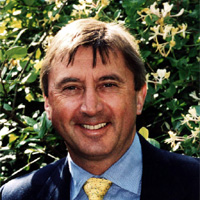
This article has been compiled by Chris Woollams from worldwide research and expert sources*
Who gets breast cancer?
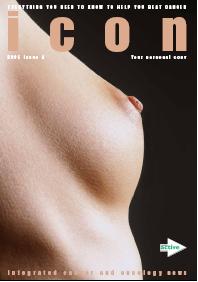 Despite the high profile cases of Pop stars in their twenties and thirties contracting the disease, the plain fact is that usually 80 per cent of all cancers come in the over 60 age group. Sadly, with ageing comes increased deficiency in cellular replication systems, more chances of genetic mistakes, reduced hormone levels and a build up of toxins.
Despite the high profile cases of Pop stars in their twenties and thirties contracting the disease, the plain fact is that usually 80 per cent of all cancers come in the over 60 age group. Sadly, with ageing comes increased deficiency in cellular replication systems, more chances of genetic mistakes, reduced hormone levels and a build up of toxins.
Breast cancer, however, has seen a gradual lowering of the age of diagnosis with approximately 40 per cent of diagnoses in women below the age of 65, and 60 per cent above that age. So there is more to this cancer than mere ageing.
The breasts are made up of ducts connecting the nipples to glandular tissue containing the lobes. Some of the breast tissue extends into the armpit where lymph nodes are found. All this is surrounded by fat and here in lies some clues to cause. Fat is a wonderful solvent and will dissolve and hold all those chemicals, toxins and hormones (your own and ingested ones) that you really should be excreting. Being overweight will not help as that will increase the percentage of fat, nor will a lack of exercise as this helps stimulate lymph flow and excretion, whilst helping provide more cancer hating oxygen to the tissues. Certain deficiencies in minerals have been found in women with breast cancer, as have vitamin deficiencies.
Although still small numbers, increasingly men are being diagnosed with breast cancer.
But doesn’t breast cancer run in families?
Another concern you often hear is that Breast Cancer ‘runs in families’. Whilst it is true that some people have a genetic ‘weakness’ – genes that weaken the immune system’s ability to spot a cancer cell, or genes that prevent the cell’s ability to repair its own DNA (you may have heard of BRCA1 and BRCA2) - these types of genes are present in less than 7 per cent of women. More genes linked to a higher incidence of breast cancer are still being discovered – for example PALB-2 - but these also seem more to do with the repair and immune systems than the breast tissue itself. Even if you have these genes estimates suggest that the risk of getting breast cancer is less than 70 per cent, although – more clues here – this figure has risen from about 40 per cent 50 years ago, quite probably along with increased levels of toxins around us, poorer diets and less healthy lifestyles.
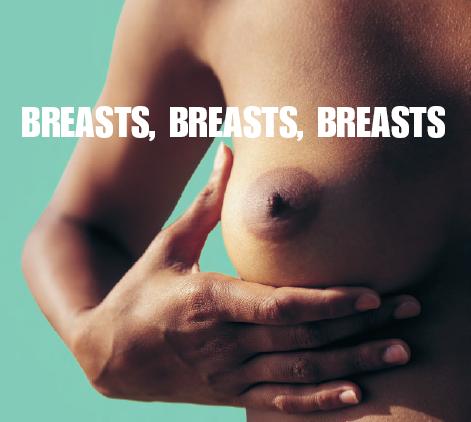 By and large prevention (See Breasts, Breasts, Breasts ) is still largely in your own hands with breast cancer and if you have had breast cancer and been given the all clear there is so very much you can do to prevent a recurrence.
By and large prevention (See Breasts, Breasts, Breasts ) is still largely in your own hands with breast cancer and if you have had breast cancer and been given the all clear there is so very much you can do to prevent a recurrence.
Putting together a treatment plan
Fret not – there is so much you can do – mostly to help yourself. When my daughter developed her brain tumour and was given just 6 months to live we found out so many things that could help – but it took at least 6 months hard work and a pair of science degrees. The aim of this site is to short circuit all this for you and to empower you – to pass on all our knowledge, our research findings, the expert studies and the possible causes so that others can benefit immediately. This is also why, when the doctors asked me, I gladly wrote ‘Everything you need to know to help you beat cancer’. The book has been a best seller in the UK for three years – and you cannot even buy it in a shop – only direct from the charity via Natural Selection’s shop - click on the tab at the top of the page!!
Now, let’s first try to understand what is going on, and what factors might be maintaing this cancer, helping it progress in your body.
The possible contributory factors to breast cancer
Various epidemiology studies have shown that smoking increases risk, as does increasing levels of regular alcohol consumption.
Dietary factors are clearly important. Various global studies show that women with breast cancer have lowered levels of vitamin C, vitamin D, vitamin B-12 and long-chain omega-3. Professor Hollick of Harvard has stated that 25 per cent fewer women would die of breast cancer if they took adequate daily levels of vitamin D. Research shows that tocotrienol vitamin E, fish oils and garlic  appear to be protective. Studies have shown that women with a history of breast cancer have lowered levels of the mammalian lignans enterodiol and enterolactone, which are made from plant lignans in the intestine. These have been shown to be made from plant lignans (e.g. in Flax seed) by the beneficial bacteria in your intestine; both reduce your oestrogen levels.
appear to be protective. Studies have shown that women with a history of breast cancer have lowered levels of the mammalian lignans enterodiol and enterolactone, which are made from plant lignans in the intestine. These have been shown to be made from plant lignans (e.g. in Flax seed) by the beneficial bacteria in your intestine; both reduce your oestrogen levels.
 Women who exercise regularly (the best is a little every day) have less breast cancer – and those with it have 50 per cent less mortality if they take daily exercise.
Women who exercise regularly (the best is a little every day) have less breast cancer – and those with it have 50 per cent less mortality if they take daily exercise.
However by far the biggest risk factor is a heightened level of the hormone oestrogen. ‘Oestroge-driven’ cancer may well account for over 80 per cent of all breast cancers. Cancer Research UK has stated that Breast Cancer rates are rising at 2 per cent per year, while oestrogen levels are rising in women by 7 per cent.
There are a number of possible reasons for this. For example:
-
Women are having less children and breast-feeding them for shorter periods. Both factors (more children and breast feeding for 9 months or more) decrease risk. This may well be due to decreases in the lifetime levels of natural progesterone, a known oestrogen balancer
-
Women are starting their periods earlier and ending them later. Modern woman has almost twice the number of periods of her 16th century predecessors.
-
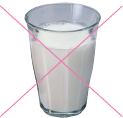
Women in the Western World consume large amounts of
Dairy. Several research studies from the Swedish experts at the Karolinska Institute suggest that the critical factor is the cow’s hormone Insulin Like Growth Factor (IGF-1), which seems to stimulate hormones such as oestrogen and other localised cell factors to make your cells grow rapidly. The more dairy you consume, the greater your breast cancer risk according to Karolinska. Another study, this time by researchers in Denmark, amongst 117,000 girls showed that those who put on a big growth spurt between ages 8 and 14 eventually had a higher risk. Again a finger was pointed at dairy.
-
Women now have more stressful occupations; many of these lead to sleep irregularities and deprivation (e.g. Nurses and Air Hostesses). Research shows that this results in lowered levels of the hormone
melatonin, which seems to counter excess oestrogen under normal conditions.
-
The finding that women who had taken more than 25 doses of antibiotics in their lives (Journal of the American Med Assn 2004, Feb 18; 291) started people questioning antibiotics. However the truth is far more likely to be the destruction of Beneficial Bacteria in the intestine which results in decreases in vitamin K, vitamin B-12 and other B vitamins, reduced effectiveness of the immune system plus likely infestations of yeasts (Symptoms like cystitis and thrush may indicate this). Over 100 clinical trials now suggest we ignore the contribution of beneficial bacteria at our peril. You simply must have adequate daily levels of a variety of strains of
beneficial bacteria (Probiotics). See below.
 We ignore the contribution of beneficial bacteria at our peril
We ignore the contribution of beneficial bacteria at our peril The US State of Evidence report 2006 summarizes the findings of more than 350 experimental, epidemiology and ecological studies and recommends new directions for the future in disease management. In particular it looks at the growing and vast amount of research on the effects of chemicals and EMF’s on the risks of developing the disease:
The US State of Evidence report 2006 summarizes the findings of more than 350 experimental, epidemiology and ecological studies and recommends new directions for the future in disease management. In particular it looks at the growing and vast amount of research on the effects of chemicals and EMF’s on the risks of developing the disease:
-
There is increasing evidence that various
Electromagnetic Forces can also reduce these levels of melatonin whilst stimulating levels of IGF-1 and other hormones. This is not a modern myth. Scientists are growing increasingly worried by the electronic smog that surrounds us all – from masts, to mobile phones, to WiFi – even electric blankets!
-
The use of synthetic oestrogens: CRUK has provided data on the increased risks of breast cancer when women take the contraceptive pill – especially if they take it after the age of 30.
HRT is also a risk factor. Indeed new research from the USA has shown that breast cancer levels have declined by 7 per cent in 2005 as a direct result of women giving up HRT.
-
Xeno-oestrogens: Increasingly,
chemicals that mimic the action of oestrogen in the body are believed to be a significant and modern link to risk.
Pesticides like DDT and Lindane, toiletry and personal care chemicals like DEHP and toluene, BPA from white lined cans and even kiddies toys, and Phthalates from plastic bottles and packaging are all thought capable of mimicking the action of oestrogen in the body by experts. Worse Dr Ana Soto of Tufts believes them to be cumulative.
All in all, there may be many factors that contributed to your breast cancer. On this web site we also cover possible links to the thyroid hormone, Thyroxine, plus an article from Eileen O’Connor who is so convinced EMF’s from a local mast gave her breast cancer that she is now a leading campaigner against such EMF’s.
Now, the important point is that we are not listing the possible contributory factors so that you dwell on things that have happened in the past. We want you to understand what factors might still be present in your life and might be contributing to the maintenance of your cancer. Then you can formulate an action plan. You might try to cut EMF’s out of your life, or you can act to lower the oestrogen (natural and synthetic) in your life – oestrogen that might be fuelling your cancer right now. (We have a book ‘Oestrogen – the killer in our midst’ that tells you the simple steps you can take to cut your natural and synthetic oestrogen levels today). After all that is exactly what your oncologist will try to do with Aromatase Inhibitor drugs like Arimidex. Then there are minerals you can take, like selenium, or complex compounds like chlorella that can help you eliminate heavy metals, or increase levels of Vitamin B-12. And articles on why breast cancer patients should take vitamin D and other natural supplements. You can find out comprehensive information on these topics and more elsewhere on this site.
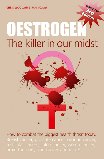 ’Did you know that this cancer can be driven by oestrogen. Find out how you can control your oestrogen levels, naturally’. CLICK HERE.
’Did you know that this cancer can be driven by oestrogen. Find out how you can control your oestrogen levels, naturally’. CLICK HERE.
Diagnosis
About 40,000 - 44,000 cases of Breast cancer will be diagnosed in the UK in the next 12 months. However, if you are pre-menopausal and your diagnosis comes from a mammogram you should read our article on screening mammograms immediately, and understand the high levels of false positive readings occurring. Do not under any circumstances have any treatments until cancer has definitely been confirmed through a means other than screening. (You could use Thermal Imaging, even Iridology as a back up). A biopsy is the most reliable method.
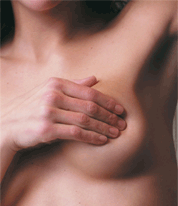 You should check your own breasts regularly. You are looking for lumps, or thickenings especially behind the nipple, sudden inversion of a nipple, dimpling on the skin surface, a rash, or a swelling under the armpit.
You should check your own breasts regularly. You are looking for lumps, or thickenings especially behind the nipple, sudden inversion of a nipple, dimpling on the skin surface, a rash, or a swelling under the armpit.
Most lumps are not cancer and are benign. Most often they are cysts, which are sacs of liquid randomly appearing in the breast tissue, or they can be benign ‘fibroadenomas’. Either way they are easily treated and no cause for concern.
If a cancer is suspected, the normal procedure is to have a biopsy. This may take tissue from under your armpit as well as from your breast. Only after tissue has been taken can anyone correctly tell you the spread (the Stage) and aggressivity (the Grade) of the cancer. After analyzing the biopsy tissue, the experts should be able to tell you clearly
A Whether the tumour is oestrogen and/or progesterone sensitive
B Whether you are HER-2 positive
Other
There have been articles in the Lancet about biopsies possibly spreading the disease, but it is a small risk.
There have been research studies covered in icon on abortion and whether it increases risk of breast cancer. Absolutely no evidence of increased risk has been reported by expert studies.
US research on Swedish women with silicone breast implants (Yes, seriously!) showed that while they had no higher risk of breast cancer, cases of lung cancer were higher than expected (Journal of the Nat. Cancer Inst. 2006; 98; 557).
DCIS and LCIS
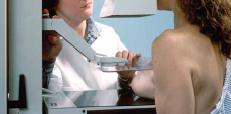 About 50 per cent of the anomalies shown up by mammograms are Ductal (DCIS) irregularities. There seems total disagreement around the world on this. The team at Christie Manchester sent us a press release stating that they were going to test various drugs on women with DCIS to try to halt this very aggressive form of cancer. Meanwhile US experts were claiming that DCIS is neither cancer nor pre-cancer but calciferous particles blocking the ducts. The lead Professor at the 2004 US Breast Cancer Symposium told everybody that only 20 per cent of cases go on to be full breast cancer. If these are calcium deposits, it might explain some of the issues with dairy and the benefits of fish oils and vitamin D.
About 50 per cent of the anomalies shown up by mammograms are Ductal (DCIS) irregularities. There seems total disagreement around the world on this. The team at Christie Manchester sent us a press release stating that they were going to test various drugs on women with DCIS to try to halt this very aggressive form of cancer. Meanwhile US experts were claiming that DCIS is neither cancer nor pre-cancer but calciferous particles blocking the ducts. The lead Professor at the 2004 US Breast Cancer Symposium told everybody that only 20 per cent of cases go on to be full breast cancer. If these are calcium deposits, it might explain some of the issues with dairy and the benefits of fish oils and vitamin D.
Treatment
Surgery: If you are pre-menopausal, you must try to have your operation in the second part of your cycle not the first, for then progesterone, not oestrogen dominates. Two studies from Guys have shown significant long-term survival benefits.
You may have a lumpectomy, or a full breast mastectomy. (You may be advised to have chemotherapy prior to surgery to reduce the size of the tumour and increase your chances of a lumpectomy rather than full-blown breast removal). If you have lymph node removal you should find out about lymphatic drainage, which may help you in the longer term.
Reconstructive surgery may then be proposed and effected at the same time, although US research suggests waiting.
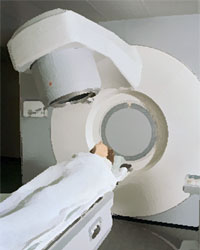
Radiotherapy is most commonly used after surgery to kill off any localised and remaining cancer cells. It may also be used on the lymph glands under the armpit if they were infected. We have a good article on how to maximise the effectiveness of your radiotherapy. (Look under ‘Treatments’ – radiotherapy.) You should continue to take all anti-oxidants and supplements during this time. We also have reports from MD Anderson and UCLA that they increase the effectiveness of Radiotherapy.
Although dosage is much more targeted, you should be clear that radiotherapy to the chest region could cause problems with the lung and heart tissue. In the past these were quite common and could be pronounced with up to 20 per cent of lung tissue damaged. Modern techniques have reduced this.
Chemotherapy: The actual programme of chemotherapy depends totally upon the individual (age, health etc) and the state of the cancer. Several drugs may be suggested at the very outset, before a very specific plan is drawn up. You can find a full review of the most common drugs on this site (Click here) and a clear analysis of what diet you should be on to maximise its effectiveness.
Be clear. The purpose of the drugs is to try to kill any remaining cancer cells and especially to try to PREVENT a recurrence in the other breast or spread to secondary organs like the liver (Vitamin K has been shown in Japanese and US research to reduce the dangers to the liver).
The two standard therapies that are most commonly talked about are:
1 Tamoxifen (for five years) followed by three years of an Aromatase Inhibitor (e.g. Arimidex).
CRUK has opined that by the end of the 8 years your cancer will have gone away. (We think it may, but only if you have altered the factors that gave it to you in the first place). Tamoxifen aims to sit on, and therefore block, cellular receptor sites that in breast cancers are attacked by oestradiol. ‘Blocked sites means no attack’ is the theory.
Since over 20,000 women in the UK are currently taking Tamoxifen, we thought it wise to say a few words here about this drug:
Tamoxifen: When told the possible side effects less than 1 in 5 US women want to take the drug  When told the side effects less than 20% of women want to take Tamoxifen
When told the side effects less than 20% of women want to take Tamoxifen (Cancer 2005: 103; 1996-2005). For example: Recent research by CRUK on cancer of the womb, which has risen by 30 per cent in a decade and is now twice as common as cervical cancer, implicates a number of factors like being overweight, not having had children and Tamoxifen usage. Dr Bushnell of Dukes, USA reviewed 9 studies on Tamoxifen and concluded that it more than doubles a woman’s risk of ischemic stroke.
(Cancer 2005: 103; 1996-2005). For example: Recent research by CRUK on cancer of the womb, which has risen by 30 per cent in a decade and is now twice as common as cervical cancer, implicates a number of factors like being overweight, not having had children and Tamoxifen usage. Dr Bushnell of Dukes, USA reviewed 9 studies on Tamoxifen and concluded that it more than doubles a woman’s risk of ischemic stroke.
Research results carried in icon (Vol 3 Issue 4) from the University of North Carolina showed that it had a minor effect (6-8 per cent) in breast cancer prevention in women with no cancer but at higher risk; however the conclusion was that side-effect risks outweighed the benefits..
US research has shown clearly that the use of natural vitamin E in its total 8 forms reduces the need for Tamoxifen doseage by 25 per cent – as it increases its effectiveness.
It is however the first line drug, the Gold Standard, in oestrogen-driven Breast cancer and blocks sites on cells that oestradiol would normally bind to, and then cause havoc inside the cell. Recent US research shows that its effects continue for 5 years after the last dose. Normally prescribed for 5 years, followed by an Aromatase Inhibitor for three years, many of the makers of these latter drugs are questioning why the patient is not moved more quickly from Tamoxifen to their drug. But then they would, wouldn’t they? There has already been a study (American Soc. Clin. Onc) which suggests better long-term survival results if women come off Tamoxifen and go onto the Aromatase Inhibitor Exemestane earlier.
2. Herceptin. Let’s be clear – about 20 per cent of women are HER-2 positive and this drug will work well for about half of them. Yes, and it does cost 20,000 pounds per year. A recent trial (Lancet 2006) confirms that Herceptin offers benefit with early stage breast cancer patients too. Ask whether the combination of drugs proposed for your chemotherapy have been through clinical trials
Ask whether the combination of drugs proposed for your chemotherapy have been through clinical trials
The side effects of any chemotherapy are very individual, not insignificant and depend upon your condition and the drug. You should also ask whether the combination you are on has actually been through clinical trials. Sometimes only the individual drugs have been.
Treatment for anaemia: Managing and counteracting anaemia can reduce death from anaemia by 50 per cent. Research published by the Cochrane Collaboration showed that epoetins (alfa and beta epoetin) show significant survival benefits. Particularly striking were the results for patients with solid tumours (Breast, lung, colon) where risk of death decreased by 51 per cent). In a second study (European Soc. For Medical Oncology- 31st Oct 2005) epotin beta was shown to reduce risk of tumour progression in patients with anaemia.
 Treatment for fatigue: icon has run several pieces on fatigue. A qualified naturopath will be able to suggest dietary changes to boost energy levels. Qualified homeopaths may be able to suggest ways to counter fatigue. Energy therapists (e.g. acupuncture, cranial osteopaths, Reiki Masters) may well be able to help. Italian research showed a lack of acetyl-carnitine which supplementation could correct. UCLA scientist report that a series of genetic markers become blocked either due to the cancer or due to the chemotherapy treatment. The California team note promising results with Etanercept. Apparently 30 per cent of women who have had chemo for breast cancer have long-term fatigue, even after the cancer has ‘gone’. This may well be true for other cancers.
Treatment for fatigue: icon has run several pieces on fatigue. A qualified naturopath will be able to suggest dietary changes to boost energy levels. Qualified homeopaths may be able to suggest ways to counter fatigue. Energy therapists (e.g. acupuncture, cranial osteopaths, Reiki Masters) may well be able to help. Italian research showed a lack of acetyl-carnitine which supplementation could correct. UCLA scientist report that a series of genetic markers become blocked either due to the cancer or due to the chemotherapy treatment. The California team note promising results with Etanercept. Apparently 30 per cent of women who have had chemo for breast cancer have long-term fatigue, even after the cancer has ‘gone’. This may well be true for other cancers.
Other useful tips and therapies.
Professor Howell, of Christie Manchester and one of our Patrons, at our Cancer Prevention Conference told the audience all about the new drugs designed to prevent the return of your breast cancer. Well, good diet, exercise, mental therapies and much more are available for you to start as soon as you wish – all with the very same aim: Preventing this cancer returning. And they can be extremely successful.
Professor Ben Pfeifer has clinical trials on his Diet Therapy. Originally developed from Prostate cancer it has proved so successful they are extending it to Breast cancer treatment. You may be interested in the Gerson Therapy, or the clinical trials of Dr Gonzalez in New York – both are diet based. You can read about Jane Plant who beat her breast cancer by developing her own diet therapy and avoiding dairy completely.
 Living Proofs - where women who beat breast cancer tell their stories
Living Proofs - where women who beat breast cancer tell their stories You can also go to our Living Proofs – where women who beat their breast cancer tell their own personal and very individual stories – you might find some useful tips and insights. You might also want to know about Phytoestrogens and their relationship to oestrogen. Try reading Pillar II of our 4 Pillars of cancer (you might find it worth reading them all).
You can also go to our Living Proofs – where women who beat their breast cancer tell their own personal and very individual stories – you might find some useful tips and insights. You might also want to know about Phytoestrogens and their relationship to oestrogen. Try reading Pillar II of our 4 Pillars of cancer (you might find it worth reading them all).
The most aggressive oestrogen is oestradiol, which can increase sodium levels and reduce potassium and oxygen levels inside the cell, causing havoc. Oestrone is its less aggressive sister (about 40 times less potent) and plant oestrogens – called phytoestrogens – are even weaker still. Many people argue that the lowered rates of breast cancers in Asia are due to large levels of circulating plant oestrogens – well which one would you rather have sitting on your breast cancer receptor site? The best sources of plant oestrogens come from ‘greens’ and pulses (like chickpeas, kidney beans and soy) and red clover. The British Journal of Cancer (2006) reports on the benefits of one such phytoestrogen, genistein. Apparently it can increase the repair proteins in a cell – even those in short supply due to the presence of BRCA 1 and BRCA 2. Some people prefer to go this route than take Tamoxifen.
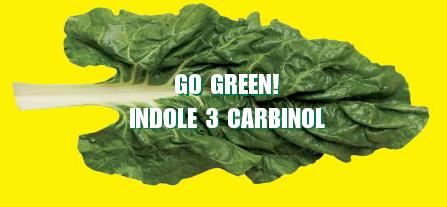 Other foods can make a difference. For example, polyphenols: Like those in Green tea and olive oil, and Indole 3 carbinol (broccoli, ‘greens’) have been shown in research to turn nasty oestradiol into its safer sister oestrone. The same study above on Genistein, showed that Indole 3 Carbinol can also increase repair protein levels in cells. Sulforaphane, also in broccoli and brussel sprouts, can inhibit the development of breast cancer cells. US Dr Keith Singletary and his team claim it works as well as the chemotherapy drugs, by causing the release of certain cancer killing enzymes. Our book, ‘The Tree of Life – the Anti-cancer Diet’, will tell you much more, and even give you a shopping list and recipes.
Other foods can make a difference. For example, polyphenols: Like those in Green tea and olive oil, and Indole 3 carbinol (broccoli, ‘greens’) have been shown in research to turn nasty oestradiol into its safer sister oestrone. The same study above on Genistein, showed that Indole 3 Carbinol can also increase repair protein levels in cells. Sulforaphane, also in broccoli and brussel sprouts, can inhibit the development of breast cancer cells. US Dr Keith Singletary and his team claim it works as well as the chemotherapy drugs, by causing the release of certain cancer killing enzymes. Our book, ‘The Tree of Life – the Anti-cancer Diet’, will tell you much more, and even give you a shopping list and recipes.
Recently there has been an enormous flury of research on the role of beneficial bacteria in our bodies. You really shouild read our article on the subject, and the links to cancer. Over 4000 research studies and 100 clinical trials have shown that Beneficial Bacteria in the gut:
-
stimulate and strengthen the immune system
-
help produce certain cancer fighting vitamins like B-12, folic acid and vitamin K
-
help produce short chain fatty acids which reduce harmful fat production (like chlorestrol)
-
can actually chelate to (bind to) heavy metals and help excrete them
-
can actually neutralise and eliminate harmful chemicals like oestrogen and nitrosamines
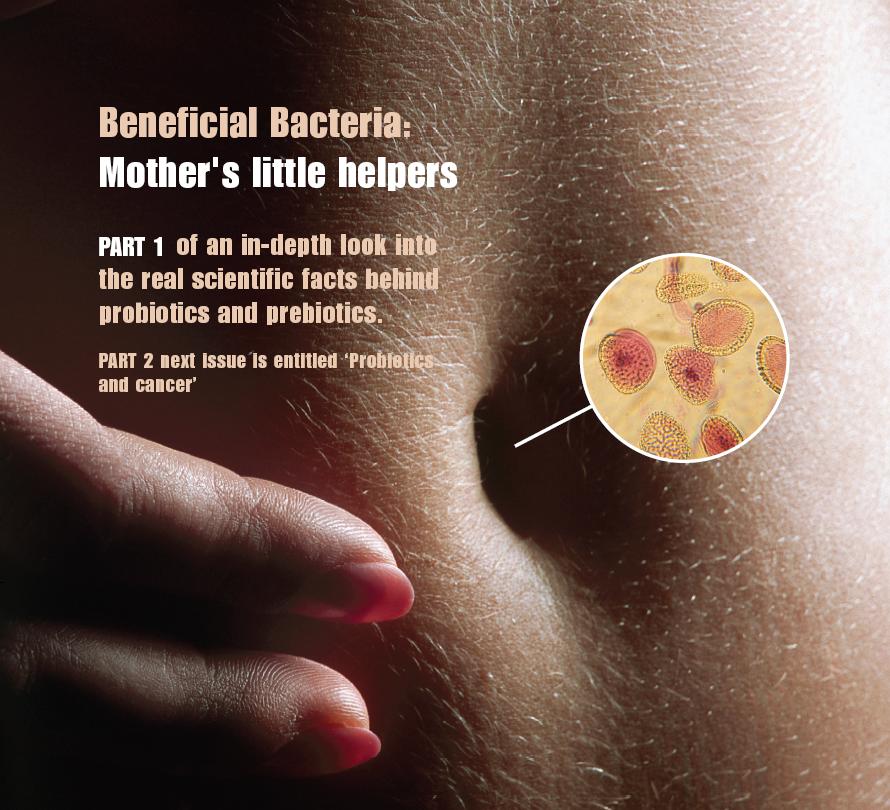 There are over 800 strains of bacteria in the gut – about 400 have been identified and a dozen or so seem, according to the research so far, to have the greatest impact on our health. 60 or more years ago we would consume daily supplies of a number of strains – but we no longer live on farms nor drink raw milk and, , instead, we chlorinate our water, fill our chickens with antibiotics, irradiate our food and pasteurise everyuthing. Worse we take drugs, antibiotics and anisthetics which deplete our stores further.
There are over 800 strains of bacteria in the gut – about 400 have been identified and a dozen or so seem, according to the research so far, to have the greatest impact on our health. 60 or more years ago we would consume daily supplies of a number of strains – but we no longer live on farms nor drink raw milk and, , instead, we chlorinate our water, fill our chickens with antibiotics, irradiate our food and pasteurise everyuthing. Worse we take drugs, antibiotics and anisthetics which deplete our stores further.
There is another school of thought that explains that these Beneficial Bacteria at night feed off the yeasts, microbes and non-beneficial bacteria we accidentally consumed during the day. Yeast infection is now endemic. It is estimated that 70 per cent of the population has excess yeasts – signs in men include bloating after meals, yellow toe nails and athletes foot;
in women it’s thrush, cystitis, bad breath and/or bloating and problems trying to lose weight! Try reading Can Candida cause cancer? on this web site.
Consider this quote: “Cancer patients undergoing chemotherapy did not ultimately succumb to cancer, but to an infestation of Candida albicans”. That comes from the 1993 Spring edition of the prestigious US medical journal Contemporary Oncology. Topping up with probiotics (strains of beneficial bacteria shown in clinical trials to deliver a benefit) and following a prebiotic based diet – lots of whole foods and whole grains – with no sugar, dairy or alcohol and certain yeast killers will help defeat the Candida albicans. It’s all in the article. The recent finding that women who take more than 25 lots of antibiotics in their lifetimes have twice the risk of breast cancer, is just one more factor pointing the finger at yeast infection and a lack of enough beneficial bacteria in the body.
Several US studies (Seattle, Integrative Cancer Therapies, Philadelphia Uni.) have all shown the importance of exercise and complementary therapies. Moderate daily exercise can reduce mortality  US studies show that exercise and complementary therapies are important
US studies show that exercise and complementary therapies are important rates by 50 per cent according to this research. If you want to know more about complementary therapies start with our ‘kiddies guide’ prepared for us by the London Breast Cancer Haven.
rates by 50 per cent according to this research. If you want to know more about complementary therapies start with our ‘kiddies guide’ prepared for us by the London Breast Cancer Haven.
According to the American Medical Association, women who take more than 7 aspirin tablets a week reduce their breast cancer risk by 29 per cent. Many ‘solid’ cancers involve prior inflammation. Aloe Vera would also provide salicylin plus other anti-inflammatories. Since the work by Sir John Vane on localized inflammatory hormones called eicosanoids, we now know garlic, ginger and long-chain omega 3 (fish oils) can reduce inflammation too.
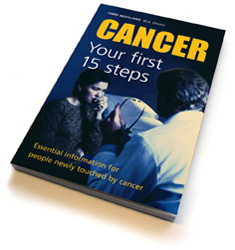 If you are not sure where to start try reading our summary ‘Cancer – your first 15 steps’. We even have a helpful book by the same name. Both allow you to start planning your ‘integrated’ or ‘holistic’ therapy programme.
If you are not sure where to start try reading our summary ‘Cancer – your first 15 steps’. We even have a helpful book by the same name. Both allow you to start planning your ‘integrated’ or ‘holistic’ therapy programme.
Overall
40,000 women get breast cancer every year in the UK and it’s rising. Eurocare 3 shows that England has a 73 per cent 5-year survival rate but the figure is lower in other areas of Britain. These figures are all below the European Average, and below France and Germany at around 81 per cent. Sweden has the highest 5-year survival rates at 83.3 per cent.
Research by the US magazine Integrative Cancer Therapies has shown the benefit of building an integrated programme of complementary therapies around your orthodox regime. Some experts state that it increases survival by as much as 60 per cent.
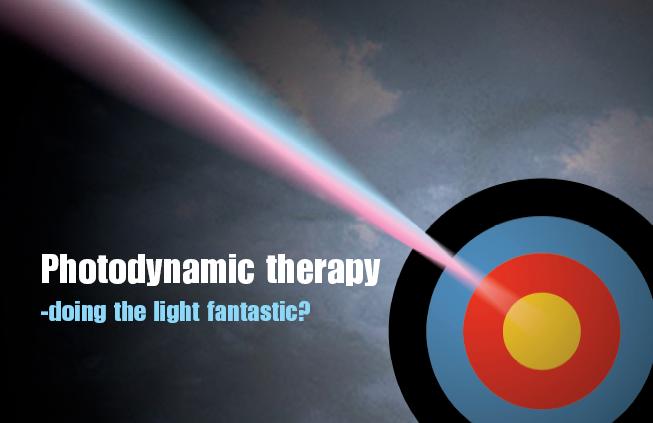 On this site you can find out about alternative options (and all the research) like Ultrasound (HIFU) instead of surgery, Photo Dynamic Therapy, the truth about vitamin B-17 and the Oasis of Hope, and even John of God.
On this site you can find out about alternative options (and all the research) like Ultrasound (HIFU) instead of surgery, Photo Dynamic Therapy, the truth about vitamin B-17 and the Oasis of Hope, and even John of God.
Or go to our Home page to find a list of the ten hottest topics we have covered recently – we promise one or two will definitely be relevant to you.
On this web site you will find more information about more treatment options (Complementary and Alternative, not just Orthodox), and on more ’possible contributory factors’ to the development and maintenance of your cancer, than on any other UK cancer web site. Some experts believe that approaching your cancer in this ’total’ way can increase an individual’s chances of survival by as much as 60 per cent.
This is all supported by the very latest research evidence from all over the world in our news section Cancer Watch.
We can do this because we are not hide-bound by vested interests, and so we can always put people first. We are not influenced by companies who seek to make financial gains from patients, we have no trustees working for, or sponsored directly or indirectly by such companies, our directors take no remuneration at all. This is our true independence, from which you benefit directly.
But this independence comes at a price: We can only rely on you, and people like you, to support our work. 47,703 people visited our site in March 2007, viewing 11 pages on average. Every month we add 20 new pages to this site. The letters and e mails of gratitude and praise tell us we really do make a difference.
If you feel an independent voice is essential in cancer, please, please help by making a donation. Every little helps.

Confused by it all??
Well, we’re only trying to help you beat this disease. If you would like to have a Personal Prescription prepared for you, then click here. It will help you obtain the best information for your personal needs and particular cancer, and thus to make more informed choices and increase your chances of survival.
There is so much you can do to increase your chances of beating this disease. We simply want to help.
Please start now. Fill in our form click here or ring our Information Hotline on 01280 821211.
The CANCERactive Difference: Intelligent Information. Independent Voice.
*Cancer (and its related illnesses) are very serious and very individual diseases. Readers must always consult directly with experts and specialists in the appropriate medical field before taking, or refraining from taking, any specific action.
This web site is intended to provide research-based information on cancer and its possible causes and therapies, so that you can make more informed decisions in consultation with those experts. Although our information comes from expert sources, and is most usually provided by Professors, scientists and Doctors, our easy-to-understand, jargon-free approach necessitates that journalists, not doctors, write the copy. For this reason, whilst the authors, management and staff of CANCERactive, icon, and Health Issues have made every effort to ensure its accuracy, we assume no responsibility for any error, any omission or any consequences of an error or omission. Readers must consult directly with their personal specialists and advisors, and we cannot be held responsible for any action, or inaction, taken by readers as a result of information contained on this web site, or in any of our publications. Any action taken or refrained from by a reader is taken entirely at the reader’s own instigation and, thus, own riskcer (and its related illnesses) are very serious and very individual diseases. Readers must always consult directly with experts and specialists in the appropriate medical field before taking, or refraining from taking, any specific action.
|